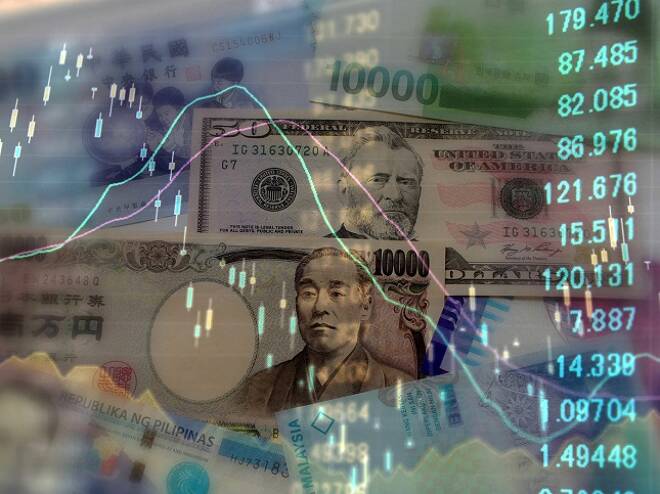Advertisement
Advertisement
USD/JPY Fundamental Daily Forecast – Pressured by Dovish Fed, Weak Outlook for Global Economy
By:
The weakness in the global economy is likely to keep the pressure on the USD/JPY since it is one of the reasons Powell cited in his remarks. Concerns over Brexit and U.S.-China trade relations are also likely to keep a lid on any rally.
The Dollar/Yen is trading lower on Thursday, following through to the downside after yesterday’s decline. Wednesday’s volatile two-sided trade was actually fueled by a report showing better-than-expected U.S. private sector jobs growth and the dovish U.S. Federal Reserve interest rate decision and monetary policy statement. Fed Chairman Jerome Powell also fueled the selling pressure with dovish comments of his own.
At 06:13 GMT, the USD/JPY is trading 108.745, down 0.310 or -0.27%.
Early in the session, the index was boosted by stronger-than-expected private sector jobs data for January. Payrolls processor ADP reported that the U.S. private sector added 213,000 jobs in January. That beat forecasts for gains of 178,000, but the monthly total came in lower than job gains of 271,000 in December.
Later the USD/JPY fell after the Federal Reserve presented a dovish front at its latest policy meeting. This dovish turn in policy drove U.S. Treasury yields lower, making the U.S. Dollar a less-desirable investment. The news also sent stocks soaring as demand for risky assets increased. This probably limited losses in the Dollar/Yen.
The Fed left its benchmark interest rate unchanged as widely expected, but erased its pledge of “further gradual increases” in interest rates, and said it would be “patient” before making any further interest rate hikes.
Fed Chairman Jerome Powell also said on Wednesday that the case for rate increases had “weakened” in recent weeks, saying “cross-currents” such as the slowing global economy and the partial shutdown of the federal government made the U.S. outlook less certain.
Bank of Japan Summary of Opinions
The Bank of Japan Summary of Opinions showed that policymakers decided that maintaining the status quo would be the best approach, however, not everyone agreed on the move. The summary showed one policymaker calling for the need to ramp up stimulus if risks escalate, underlining a rift in the board between those who want stronger steps to achieve the price target, and others who are worried about the rising cost of prolonged easing.
“The BOJ should stand ready to take policy action if risks to the economy and prices materialize,” the board member was quoted as saying.
“When inflation is moving further away from our target, it’s not a desirable approach to stand pat until a serious crisis occurs,” said the board member.
Additionally, Reuters quoted Bank of Japan Deputy Governor Masayoshi Amamiya as saying, “The central bank must contain the side effects of its policy to sustain massive stimulus, highlighting concerns over the pain prolonged easing is inflicting on the profits of financial institutions.”
Amamiya went on to say, “The effects of the trade tensions may spread, not only through the direct impact on trade, but through the damage on companies’ investment appetite and the market’s risk sentiment.”
Forecast
The weakness in the global economy is likely to keep the pressure on the USD/JPY since it is one of the reasons Powell cited in his remarks. Concerns over Brexit and U.S.-China trade relations are also likely to keep a lid on any rally.
Dollar/Yen traders will continue to monitor the direction of U.S. Treasury yields and demand for risky assets.
Later today, investors will get the opportunity to react to U.S. economic data including the Challenger Job Cuts report, Employment Claims, Chicago PMI and New Home Sales. Also on tap are Weekly Unemployment Claims. They are expected to come in at 215K, up from 199K.
About the Author
James Hyerczykauthor
James Hyerczyk is a U.S. based seasoned technical analyst and educator with over 40 years of experience in market analysis and trading, specializing in chart patterns and price movement. He is the author of two books on technical analysis and has a background in both futures and stock markets.
Advertisement
